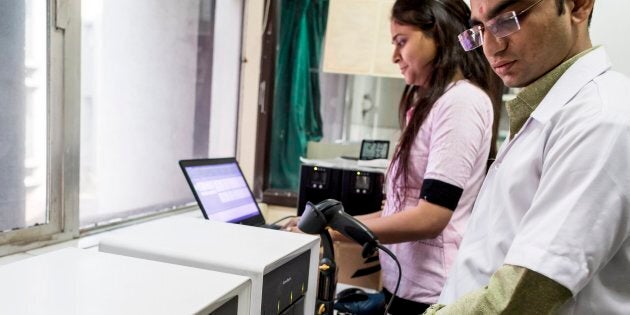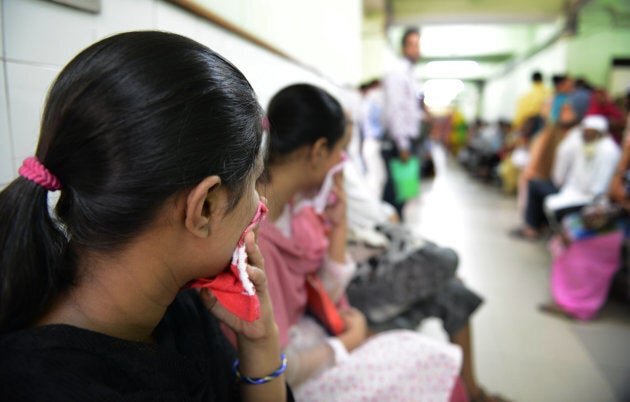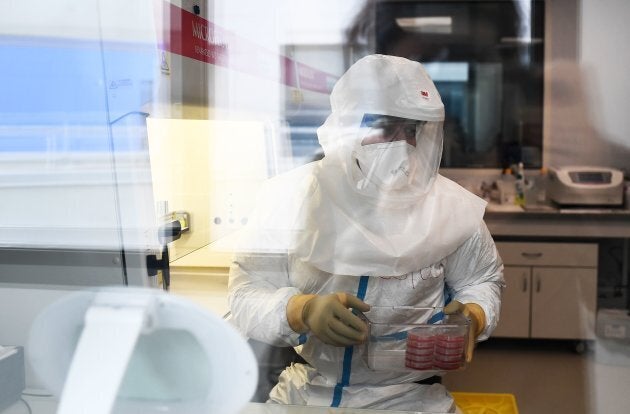
Which disease killed humans around 600 BC, and still kills humans by the millions in 2019? The answer is tuberculosis (TB), a curable bacterial infection.
The World Health Organization declared TB a public health emergency a quarter of a century ago. Since then, progress has been made in saving lives by putting patients on short-course treatments. But TB still reigns as the "captain of the men of death."
In 2017, 10 million people developed TB, and 1.6 million people died because of it. Among these 10 million individuals, only 6.4 million were diagnosed and officially reported to the governments. The rest are considered "missing" — either not diagnosed at all, or managed in the private health sector but not reported to the government.
Diagnosis is the biggest gap in the TB cascade of care.
How can we end TB within a generation? A bold goal needs a bold strategy. This week, "The Lancet Commission on TB: building a tuberculosis-free world" was released. The report, the culmination of two years of hard work, involved 37 commissioners from 13 countries, and includes economic analyses and modelling of interventions. Both of us contributed to the report as commissioners. The commission provides a roadmap with five priority areas for tackling TB.
The first priority calls for us to go where the patients are and offer them quality care.
Quality diagnostics and treatment must be available to patients wherever they seek care. Current TB diagnostics (e.g. microscopy) are not fit-for-purpose and miss a huge number of patients with TB and drug resistance. Indeed, diagnosis is the biggest gap in the TB cascade of care.
To overcome this gap, we need to expedite development of accurate, reliable, rapid tests that can be performed outside of the laboratory setting with minimal training, such as in primary care clinics. We also need tests that can quickly identify drug-resistant strains of the bacteria, so that treatment can be tailored to the individual patient. Thankfully, we now have rapid molecular TB tests, and technologies such as whole-genome sequencing are showing great promise for drug-resistance testing.

New TB drugs such as bedaquiline are not only saving lives, but also paving the way for novel, shorter drug regimens. But new diagnostics and drugs are worth little, if they do not reach those who need them the most. So, access to new tools is critical, and advocacy from affected communities can play a big role in this area.
In many high-burden countries such as India, Indonesia and Nigeria, many people with TB seek care from private health providers who offer suboptimal quality of care. Engaging private healthcare providers is therefore critical to ensure quality of TB services, and also to get a true picture of disease burden.
The second priority calls for us to go where the missing patients are.
One way to help find the millions of people with TB who are "missing" is to screen high-risk communities so that those with TB can be linked to care. High-risk populations include household contacts of those with TB, people living with HIV and those are who are most marginalized.
Quite simply, TB is woefully underfunded.
While technologies such as digital X-rays coupled with artificial intelligence-based image reading software play a key role in active case finding, we still need a simple test (like a pregnancy test) that can help triage those who need more advanced TB testing. Here, biomarkers are likely to hold the key.
The third and fourth priorities focus on investment in TB.
Quite simply, TB is woefully underfunded. TB R&D receives a small fraction of what is needed to realize the tools we desperately need — including critical diagnostics, new vaccines and drug regimens — in the timeframe in which we need them. Implementation research is also essential to guide decision making.
The Lancet report estimates that we will need about US$2 billion per year during the next four years to develop essential TB tools and move them from the pipeline into production. Investing in TB has a strong return on investment, with an estimated US$16–82 return for every dollar spent on TB research and development.

Although greater investment from high-income countries such as the U.S. and the EU is imperative, high-burden middle-income countries, such as Brazil, Russia, India, China and South Africa now have the economic and financial muscle to take on a larger role in ending TB, which disproportionately affects these BRICS countries.
The final priority calls for accountability.
Holding heads of state, national TB programmes key non-governmental organizations, donor agencies, and other stakeholders to account means setting measurable targets and regularly assessing progress. To meet this need, the The Lancet TB Observatory is being launched – an independent annual report evaluating progress towards the 2022 UN High-Level Meeting targets, and monitoring domestic and global financing.
More from HuffPost Canada:
As Lancet Commissioners, we share the optimism of our fellow commissioners, that it is possible to build a TB-free world. With targeted, proven strategies; smart investments based on sound science; accelerated research and development; and a shared responsibility, we can defeat TB within a generation.
Madhukar Pai, MD, PhD, is a Canada Research Chair in epidemiology and global health at McGill University, Montreal. He is the director of McGill Global Health Programs, and Director of the McGill International TB Centre.
Catharina Boehme, MD, is Chief Executive Officer of FIND, Geneva. FIND (Foundation for Innovative New Diagnostics) is a global non-profit organization that drives innovation in the development and delivery of diagnostics to combat major diseases affecting the world's poorest populations.
Have you been affected personally by this or another issue? Share your story on HuffPost Canada blogs. We feature the best of Canadian opinion and perspectives. Find out how to contribute here.
Also on HuffPost: